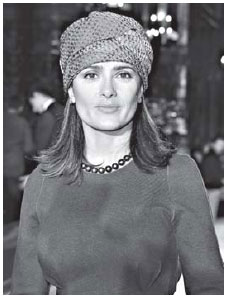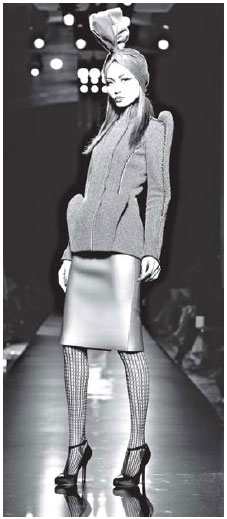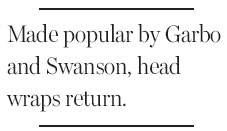Style
In a nod to its style,the turban re-emerges
Updated: 2010-12-05 17:29
(chinadaily)

The actress Salma Hayek wears a turban in Paris. Pascal Le Segretain / Getty Images

A turban tops a stylish arrangement at a Paris show. Valerio Mezzanotti for The New York Times
Wearing a turban demands confidence. You have to truly believe in your look.
The turban has never really vanished, but it has been lying low. Recently, though, this dormant trend has quietly, but assertively, surfaced at fashion shows and on city streets.
In New York, Jason Wu styled his spring collection with black or cobalt turbans. The Vena Cava designers used them in their show. Giorgio Armani used North African-inspired turbans in his collection in Milan in October. June Ambrose, a veteran stylist who has dressed artists like Mary J. Blige, P. Diddy and Jay-Z, wore a turban every day during New York Fashion Week in September. And Salma Hayek arrived at the Stella McCartney show in Paris in a navy and white printed turban.
"People didn't bite when Miuccia Prada showed them a few years ago," Ms. Ambrose said, "but since then, it's caught on."
When the trendsetting Kate Moss showed up at a gala at the Metropolitan Museum of Art in a turban in May 2009, she stood out among the parade of glamorous guests. "Kate can look any way she wants," said Harold Koda, the curator of the Costume Institute at the Met. "She can be the girl next door, grungy, et cetera. But once she put on the turban, she became a starlet."
Once linked to grannies in housecoats, the turban has a new association for young women. They have embraced the sophistication linked with Hollywood glamour of the 1920s and '30s, when women like Garbo, Gloria Swanson and Joan Crawford wore them. "From way back, turbans signified a woman who was very educated and worldly," said Caroline Rennolds Milbank, the fashion historian.
Because turbans have historically been associated with Arab dress, it is tempting to connect them with the conflict in the Middle East.
"They make a strong political statement, like wearing harem pants," Ms. Ambrose said. "We take an element of other cultures and internalize it."
Mr. Koda isn't convinced that they have anything to do with politics: "It's not a part of a Kumbaya fashion movement. I think it's more of Poiret's view of Orientalism than women watching the news and referencing what's going on in Afghanistan. It's an exoticism, a sense of the other that is visually compelling."

Not everyone finds turbans enchanting. Some fashion bloggers have dismissed them as a costume and cannot understand why they keep making a comeback. Other women are posting turban-tying tutorials.
"I was tying turbans on Busta Rhymes 10 years ago," Ms. Ambrose said. "For me, it's cyclical. It was time for me to bring it up in conversation again." And she did.
Ms. Ambrose recently put the R &B singer Chrisette Michele in a turban for the music video for "I'm a Star."
"Fashion is mute until we give it a voice," added Ms. Ambrose. "That's the guts and the energy of this whole thing."
Kirsten Luce for The New York Times
The stylist June Ambrose, center, arrives at a party in New York wearing a turban. She said the head wrap makes a strong political statement.
The New York Times
E-paper

Ear We Go
China and the world set to embrace the merciful, peaceful year of rabbit
Preview of the coming issue
Carrefour finds the going tough in China
Maid to Order
Specials

Mysteries written in blood
Historical records and Caucasian features of locals suggest link with Roman Empire.

Winning Charm
Coastal Yantai banks on little things that matter to grow

New rules to hit property market
The State Council launched a new round of measures to rein in property prices.
